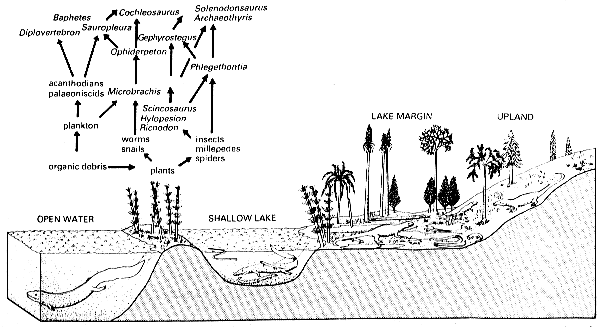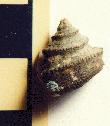
| Palaeos: Paleozoic |  |
Pennsylvanian Epoch |
| Carboniferous Period | Moscovian Age |
| Page Back | Back: Bashkirian | Back: Mississippian | Up: Pennsylvanian | Unit Home |
| Page Next | Next: Kasimovian | Next: Cisuralian | Timescale |

The Moscovian is in the ICS geologic timescale a stage or age in the Pennsylvanian, the youngest subsystem of the Carboniferous. The Moscovian age lasted from 311.7 ± 1.1 to 306.5 ± 1.0 Ma,[2] is preceded by the Bashkirian and is followed by the Kasimovian. The Moscovian overlaps with the European regional Westphalian stage. This epoch represented the culmination of the Late Carboniferous biota
The great tropical rainforests of Euramerica supported towering lycopsids and a heterogeneous mix of vegetation. These Lycopsid dominated forests, altered landscapes by creating organic-rich anastomosing river systems with multiple channels and stable alluvial islands.
Animal species distribution was very cosmopolitan at this time with the same species existing everywhere across tropical Pangaea. Invertibrates were abundant and diverse. Terrestrial vertebrates were predominantly amphibians and a few basal amniotes (‘reptiles’). Amphibians were tied to waterside habitats and were primarily piscivores, though a few had evolved insectivory. Almost unnoticed amongst the tetrapods, an important event was taking place. Alongside the Protorothyridid Captorhinids (Eureptilia), and barely distinguishable from them, was the earliest known Pelycosaur (Synapsida), Archaeothyris. The interplay between these two great divisions of amniotes - the Sauropsida (or Eureptilia) and the Theropsida (or Synapsida) will characterize tetrapod evolution up until the present day.
At the end of the Moscovian and continuing into the early Kasimovian, climate change affected the ecology of the rain forests resulting in a tree-fern dominated flora, replacing the lycopsids. The drier climate also affected amphibians resulting in a reduction in species, while the reptiles, better adapted to the drier conditions, diversified into more species. Yogi111212
Gondwana glaciation reaches its maximum extent.
The ![]() Mazon Creek is a very important Carboniferous Lagerstätten
Mazon Creek is a very important Carboniferous Lagerstätten
Terrestrial arthropods flourish and insects continue their radiation which began in the Bashkirian.
 Worthenia tabulata Horizon: Minturn Formation, Late Atokan Stage (Kashirskian Age)Locality: McCoy, Eagle County, Colorado, USA Comments: Collector: |
 Aglaocrinus keytei Horizon: Minturn Formation - Late Atokan Stage (Kashirskian Age)Locality: McCoy, Eagle County, Colorado, USA Comments: Collector: |
The golden age of amphibians. A selection of diverse types known from a single locality is shown below.
|
Microbrachis pelikani Length: 17 cm - snout to pelvisHorizon: Westphalian D Locality: Nýrany, Czech Republic Comments: Shallow-water/swamp-lake aquatic; a very common form, at least 82 specimens have been recovered from this locality |
Almost unnoticed amongst the tetrapods, an important event was taking place. Alongside the Protorothyridid Captorhinids (Eureptilia), and barely distinguishable from them, was the earliest known Pelycosaur (Synapsida), Archaeothyris. The interplay between these two great divisions of amniotes - the Sauropsida (or Eureptilia) and the Theropsida (or Synapsida) will characterize tetrapod evolution up until the present day.
| Links and References |
![]() Mazon
Creek Fossils - A window into the Carboniferous period
Mazon
Creek Fossils - A window into the Carboniferous period
![]() Reference - Andrew R. Milner, "The Tetrapod Assemblage from Nýrany, Czechoslovakia", in Systematics Association Special Volume No.15, "The Terrstrial Environment and the Orogin of Land Vertebrates", ed. by A. L. Panchen, 1980, pp.439-496, Academic Press, London and New York
Reference - Andrew R. Milner, "The Tetrapod Assemblage from Nýrany, Czechoslovakia", in Systematics Association Special Volume No.15, "The Terrstrial Environment and the Orogin of Land Vertebrates", ed. by A. L. Panchen, 1980, pp.439-496, Academic Press, London and New York
| Page Back | Unit Home | Page Up | Page Top | Page Next |